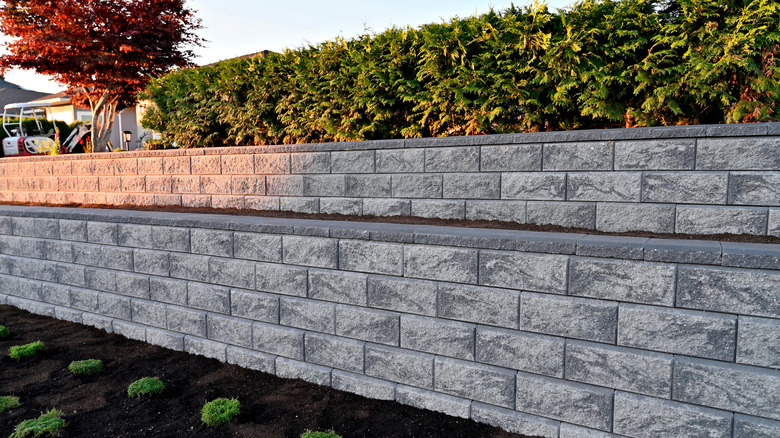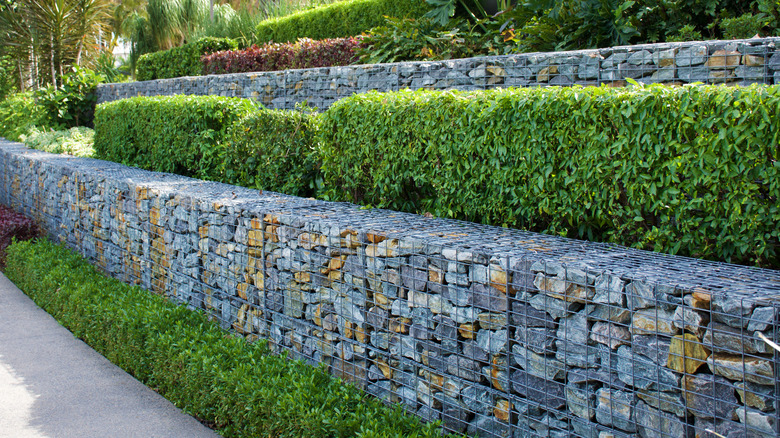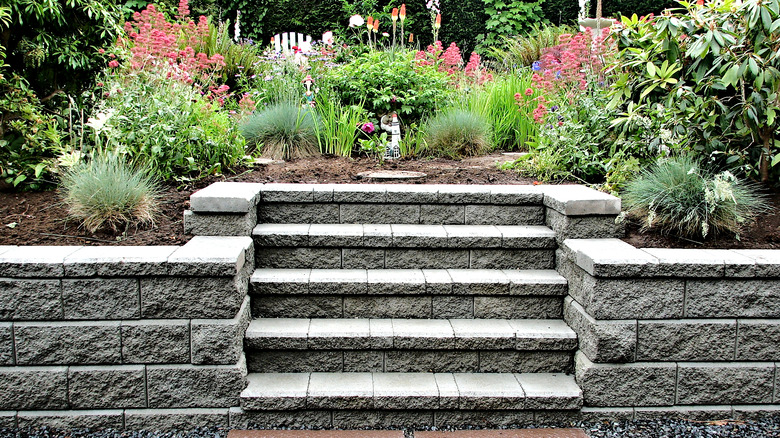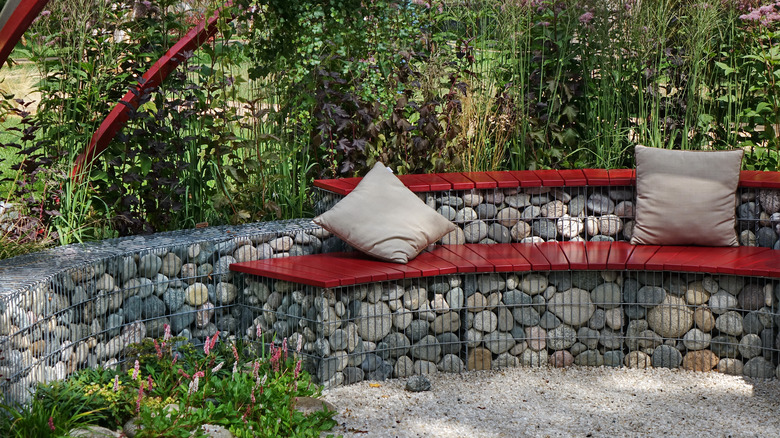3 Things To Consider When Choosing Your Retaining Wall Material
Retaining walls serve various purposes but are incredibly functional in sloped areas. If soil keeps getting into your yard or you have drainage issues, they will protect your landscape from these spills, via New Life Rockeries. Retaining walls also look nice and add dimension to a home's landscape. One of the main distinctions of this type of wall from the other sorts used in landscaping is that it usually needs approvals before construction.
Retaining walls can be gravity walls, which are only supported by their own weight or other materials that can fortify them. It's also common to find a combination of both. According to Structural Guide, the common types of failure of a retaining wall include sliding, an increase in soil pressure, slope stability issues, and overturning. How the wall is constructed plays a significant role in avoiding these failures, so here are three things to consider when choosing your retaining wall material.
Its purpose
The main reason you need a retaining wall will determine your chosen material. A retaining wall installed purely for design reasons won't need to be made from the sturdiest material. However, a severe erosion problem requires a durable fence that won't be broken down from the pressure. If the primary purpose of the retaining wall is to prevent soil spills, then you need to consider the type of soil and how the material can hold it. In freezing climates, for example, the material must be strong enough to withstand any damage to the wall if the soil pressure increases, via San Diego Pavers.
If you're more concerned about water, then the material should be able to support a strong drainage system. A panel wall made from concrete and reinforced with steel can be trusted to hold up heavy weight, while a gabion mesh wall made of wire boxes containing stones can be fitted with any material to match the decor of your home, per San Diego Pavers.
Location
It's important to consider the location of your retaining wall when choosing the material. What is in front of the wall, and what is above it? The site will help inform other aspects of the wall, like its height and how much space it can occupy. In a small sloped backyard, Let's Fun Outdoor recommends rows of walls on the slope and even stairs that you can sit on. This maximizes the limited space, which is perfect for entertaining guests in the backyard.
A retaining wall can also be used to section off parts of the house, like a patio or pool, keeping dirt out and improving the appearance of the particular area. It would be best if you made a plan that outlines where the wall will be placed before excavation. Depending on the height you want for your retaining wall, you might need to call in a professional even if you're going to DIY, advises OSU Extension Service.
Aesthetics
Luckily, your retaining wall doesn't have to be boring, and there are many options when it comes to the material. No matter the type of wall you build, you'll be able to add a personal touch to the exterior that fits your design theme. Let's Fun Outdoor suggests using natural stones, entwined bricks, and stone art to decorate the wall. You can also add accessories like sculptures, art pieces, and even lights to keep it interesting at night.
If the retaining wall acts as a garden, the plants and flowers will add lots of color and texture to the scenery; natural wall materials will complement that. Another way to get the green look is to add planters and pots to the wall, making it a vertical garden. Masonry veneer is an affordable alternative to achieve the natural stone look and can be attached simply to your wall structure (via House Method).



